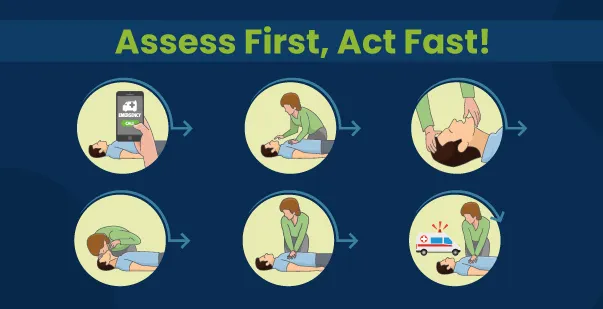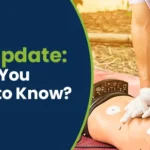Table of Contents:
- Introduction
- Why is Situational Assessment the Key to Life-threatening Emergencies?
- What Are the 3 First Steps for Responding to an Emergency?
- Benefits of Situational Assessment in Emergencies
- Know the First Step in Assessing the Victims!
Introduction
The best way to save a person’s life in emergencies is to act immediately. However, you must fully understand the situation to help the victim. This leads to positive health outcomes across all settings. Healthcare experts generally suggest that the first step in assessing the victim is to analyze the situation. This step forms the foundation of all subsequent actions you take in providing appropriate care to the victim. Let’s explore why assessing the problem is key to overcoming life-threatening situations.
Read More: Learn Essential First Aid For Emergencies
Why is Situational Assessment the Key to Life-threatening Emergencies?
A recent report suggests that the number of emergency department visits resulting in hospital admission in the United States is 18.3 million. This highlights the importance of prompt and precise evaluation in emergency settings to ensure timely interventions and improve patient outcomes.
Here are additional reasons why assessing the situation is key to responder safety and the victim’s well-being:
Ensures Personal Safety
You must assess the situation in every emergency first to ensure your safety. If you rush into a dangerous environment, it puts you at risk and complicates the situation. You can no longer help the person if you are injured.
For example, entering a burning apartment without proper protection can be fatal in a fire accident. Similarly, approaching the victim without caution can expose you to moving traffic or hazardous materials in motor vehicle accidents. You must approach the victim after assessing for scene safety. This helps you identify dangers, such as harmful chemicals or downed electrical wires, for safe intervention.
Prevents Harm to the Victim
If you take a few moments to assess the situation, you can prevent unintentional harm to the victim. Some emergencies may be more complex than they appear, and improper intervention can worsen the condition. For instance, if you move a person with a suspected spinal injury, the victim may have paralysis if the situation is not handled correctly.
The first step in any emergency is to assess the scene and determine the most appropriate way to assist. In cases of suspected trauma, for example, maintaining spinal alignment while waiting for professional help is better than moving the victim.
Identifies the Correct Response Strategy
Every emergency is different and requires varied responses from rescuers or healthcare professionals. Proper situational analysis allows you to identify the specific nature of the emergency and choose a practical course of action. Checking for responsiveness in the victim varies based on the situation. You may have to deliver cardiopulmonary resuscitation (CPR) or use an automated external defibrillator (AED) in some instances.
For example, rapid CPR initiation is key to treating unresponsiveness after analyzing the absence of a pulse. In contrast, the Heimlich maneuver may be the more appropriate response if the victim is conscious and choking. Assessing the situation guides you toward the most appropriate intervention and saves valuable time and resources.
What Are the 3 First Steps for Responding to an Emergency?
Correct actions for scene safety and assessment are the key to helping victims in life-threatening emergencies. You can learn more about these steps by enrolling in certification courses to enhance your response skills. The three key steps include:
Scene Safety
Before doing anything, ensure that the environment is safe. Check for hazards such as water, electricity, fire, or violence. Use your senses, such as sight, sound, and smell, to detect any dangers. Do not approach the victim if the situation is unsafe. Call 911 emergency services to handle the situation safely.
Assess the Victim’s Condition
After assessing the scene safety, quickly evaluate the victim’s condition. Tapping the person on the shoulder will determine whether they are responsive or unresponsive. If the victim remains unresponsive, ask loudly, “Are you okay?” and check for signs of life, such as breathing or a pulse. Analyze signs of injury, such as fractures, bleeding, or burns.
Decide on the Best Course of Action
Call 911 or alert emergency services immediately if the situation requires more than one responder or specialized equipment. Provide concise details about the location and nature of the emergency to ensure help arrives as quickly as possible. Your next steps depend entirely on the initial evaluation. This helps determine whether the victim needs CPR or further professional help for severe bleeding or unconsciousness.
Read More: Chance of Survival with CPR: What You Need to Know in an Emergency
Benefits of Situational Assessment in Emergencies
You must know what are the correct actions to take for scene safety and assessment to ensure the well-being of everyone involved. You can also assure the best possible outcome for the victim through these courses of action. Additional benefits of situational assessments include:
Minimizes Delays in Treatment
A proper situational assessment in medical emergencies leads to an efficient and focused response. However, acting without adequate evaluation can delay providing the appropriate medical care for the victim. Assessing the situation first ensures that you act confidently and correctly.
Ensures the Most Effective Use of Various Resources
An emergency responder has limited time and resources to work with when helping a victim in emergencies. By evaluating the situation correctly, you can quickly determine whether basic first aid is sufficient or if advanced medical care is needed. This helps ensure that resources like a defibrillator or oxygen cylinder are used appropriately.
Enhances Communication with Emergency Services
When calling 911 or emergency medical services, you can communicate the nature of the emergency. Conducting a quick situation assessment enables you to provide key details, such as whether the victim is breathing, responsive, or injured. This information allows emergency personnel to arrive well-prepared to assist the victim.
Reduces Panic
Taking a moment to analyze the situation can help reduce panic in high-stress situations. By following a logical process, you can remain calm and focused. These step-by-step points allow you to take the best action for yourself and the victim. They can also reassure others around you, preventing further chaos.
Know the First Step in Assessing the Victims!
The first step in assessing the victim is analyzing the situation, especially in life-threatening emergencies. This helps ensure victim safety, prevent further harm, and enable effective responses. Even the best intentions can lead to dangerous outcomes without an initial assessment. Take a few moments to assess the scene to provide the right help at the right time. Enrolling in ACLS certifications can help you learn more about integrating situational assessments into emergency responses. Remember to stop, assess, and then act in every challenging situation.
References
- https://heartstartcpr.net/first-step-in-accessing-life-threatening-situations/#:~:text=Assessing%20the%20situation%20is%20the,enables%20the%20most%20effective%20response.
- https://www.hcghospitals.in/blog/guide-on-medical-emergencies-and-critical-care-services/
- https://www.indianredcross.org/fmr/Module2.pdf







